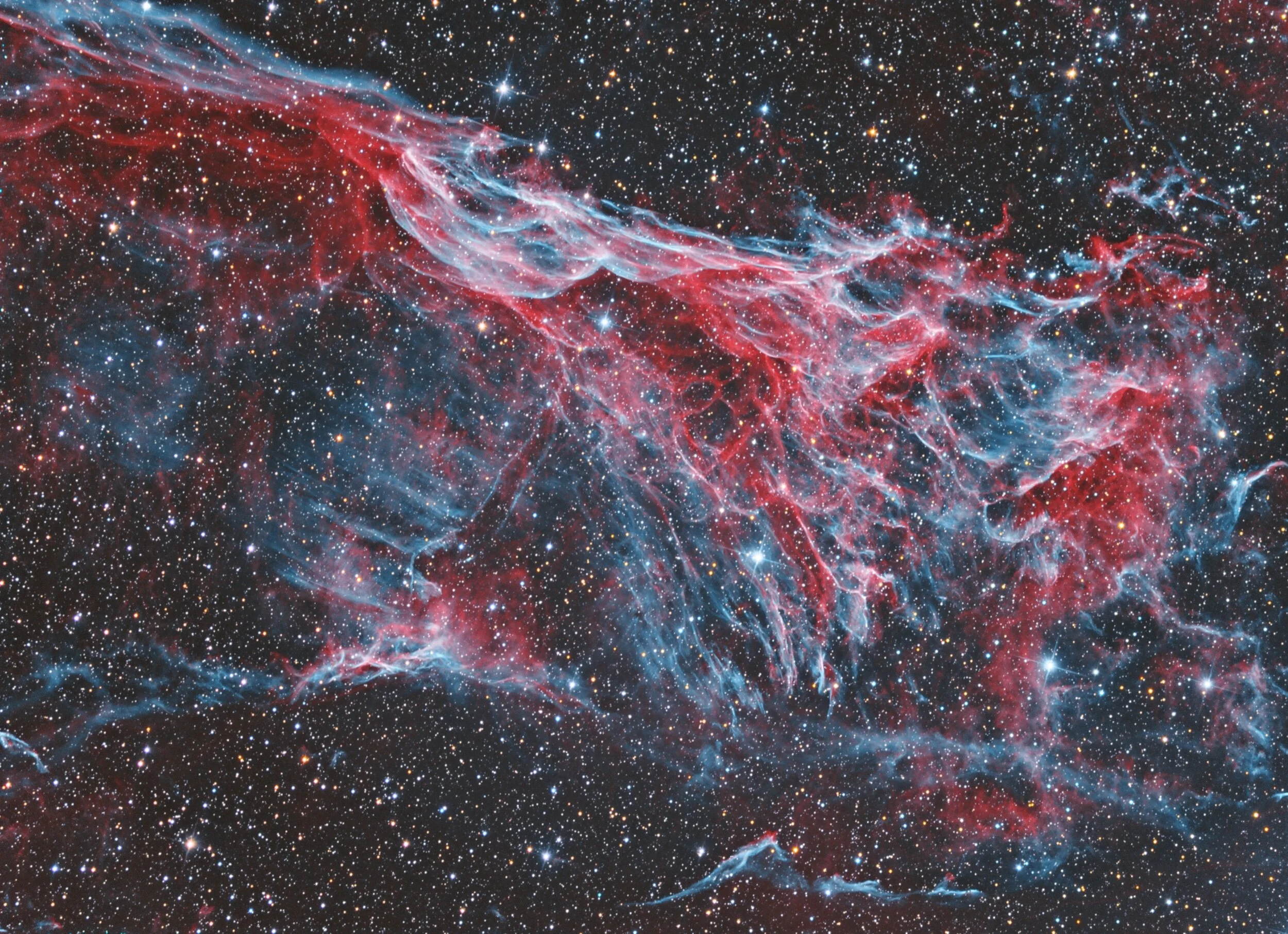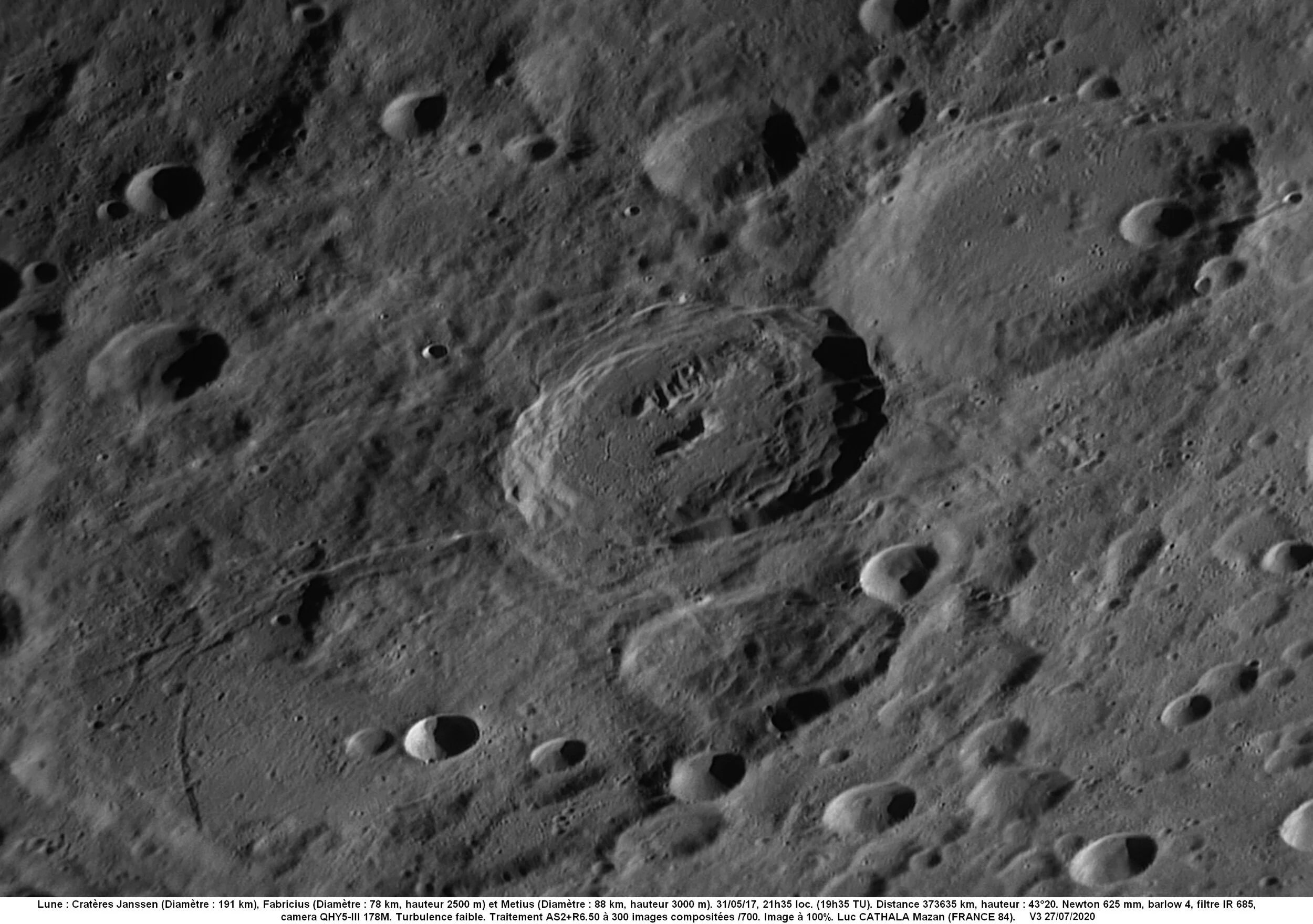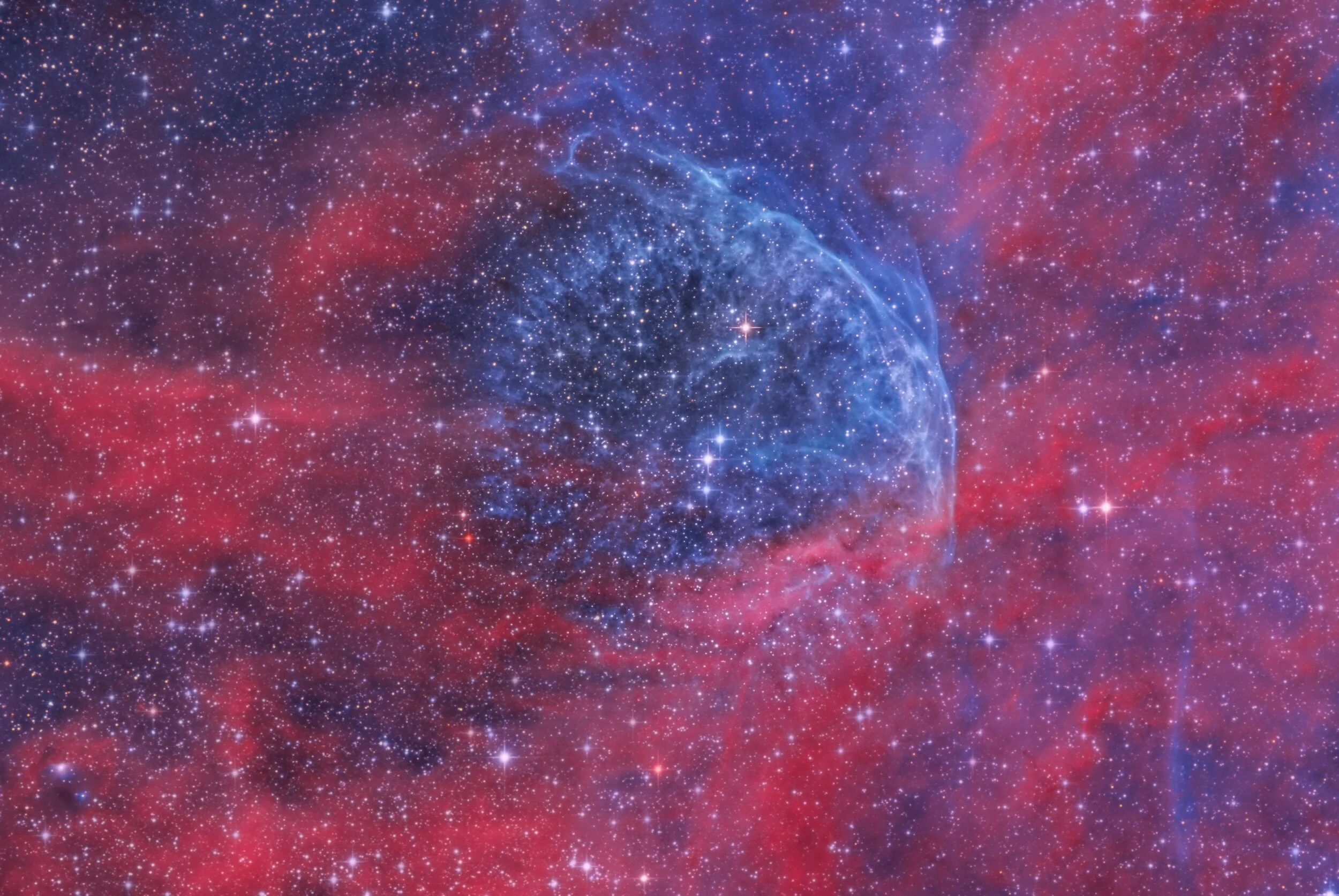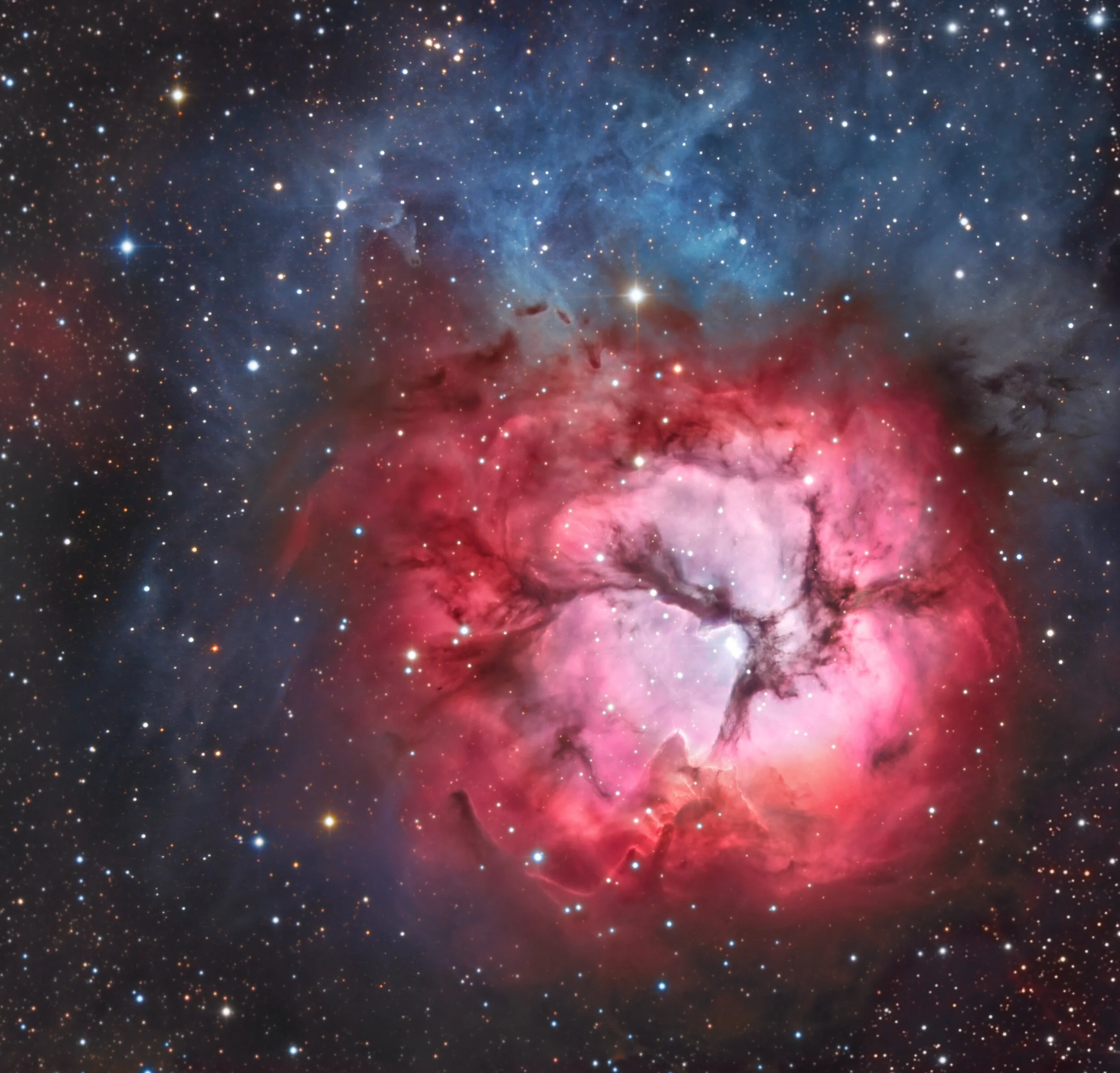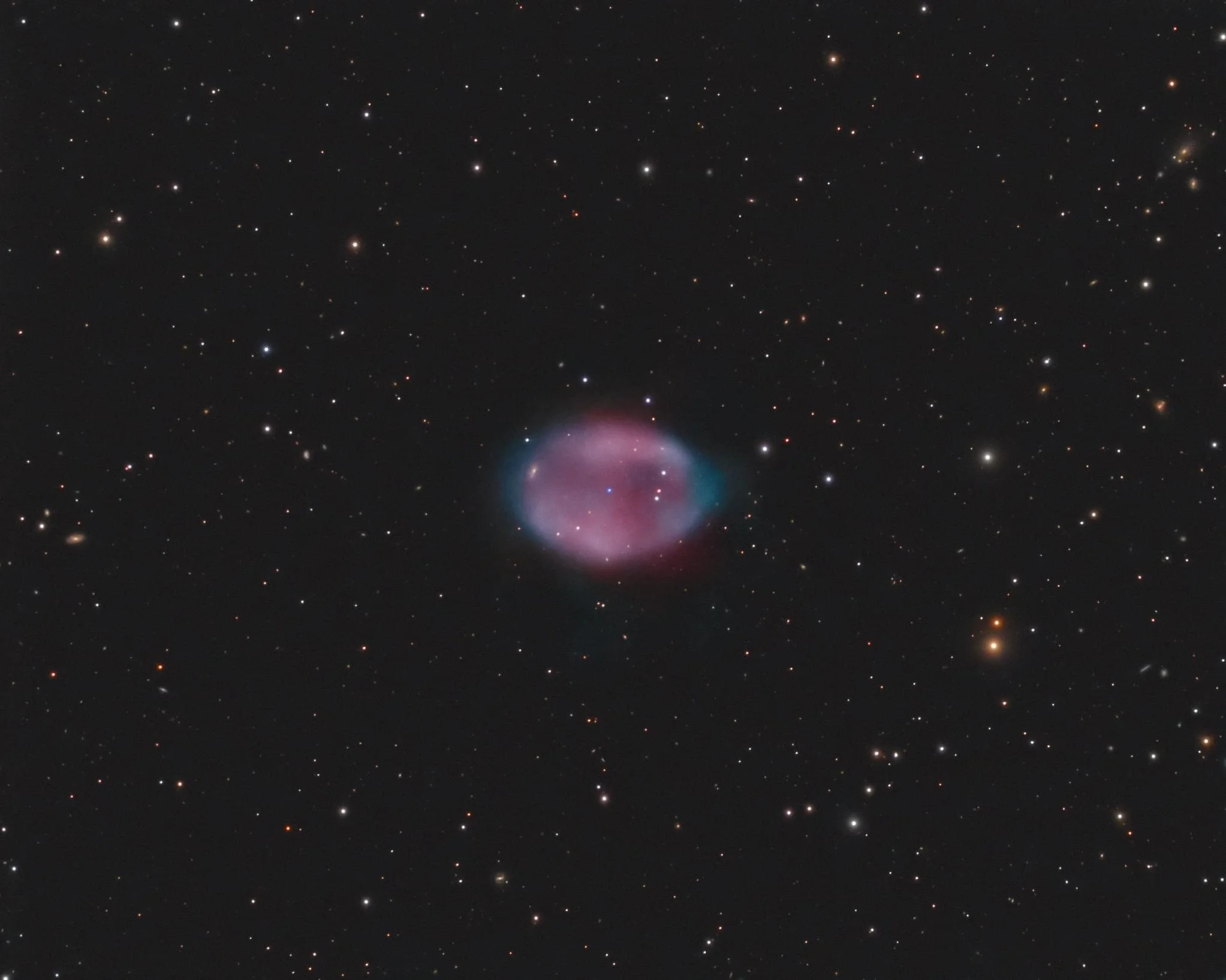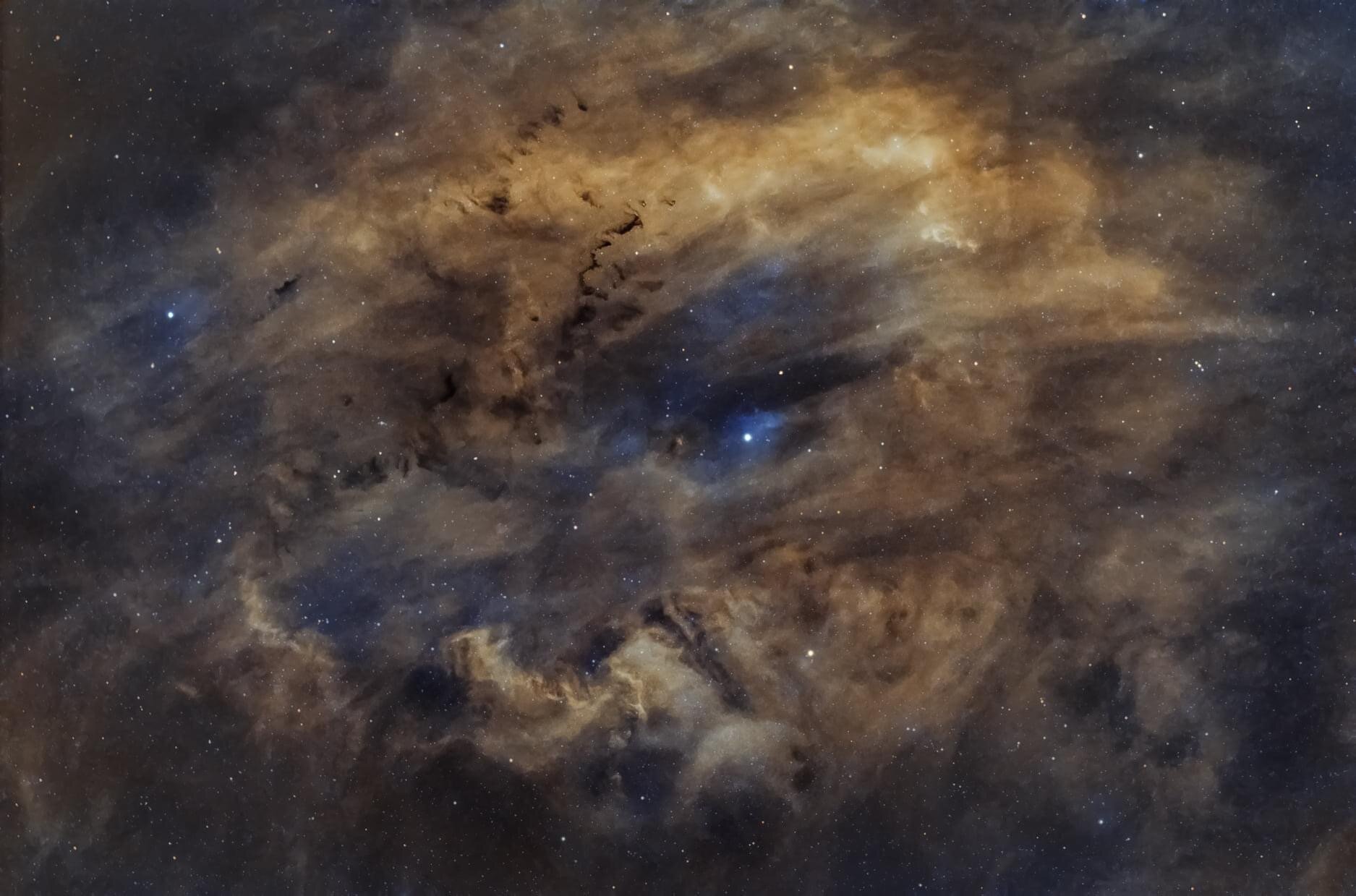
AAPOD2 Image Archives
NGC6979- Pickering's Triangle HOORGB
Image Description and Details : Ha : 91 x600". Gain 200. Bin1
[OIII]: 90x600". Gain 200. Bin1
RGB: 40x60". Gain 139. Bin1 (For stars color)
Total integration time: 32h10'
Data acquired on several nights of July and August 2021 from Belmonte and Naharros, Cuenca (Spain)
Equipment: ZWO ASI1600MM. Meade R8 200/1000. EQ6R-PRO.
Guiding: EZG60 + QHY5-L-II
Capture Software: NINA & PHD2
Processed with Pixinsight 1.8.8.7
Copyright: Alejandro López
Ngc 5907
Image Description and Details :
A spiral galaxy located in the dragon It has several stellar flows, here on the image I have only captured the left flow the rest of its large loop is very little visible or then some influences by severely pushing the transformation histo. Its stellar fluxes are remnants of dwarf or similar sized galaxies that have been disturbed and extended along its orbit. The galaxy is located 42.4 million light years away.
Atik 460ex et 200/1000 en lrvb sur 21h l..63x900sR..22x300sV..20x300sB..21x300s
Copyright: Rémi Méré
The Janssen Fabricius and Metius
The Janssen Fabricius and Metius trio caught with low turbulence and my Newton 625mm IR685 barlow Televue 4X and QHY5III 178M . Note the three connected valleys in Fabricius.
Copyright: Luc Cathala
WOLF RAYET 134
WR 134 is a variable Wolf-Rayet star located around 6,000 light years away from Earth in the constellation of Cygnus, surrounded by a faint bubble nebula blown by the intense radiation and fast wind from the star. It is five times the radius of the sun, but due to a temperature over 63,000 K it is 400,000 times as luminous as the Sun.
photo taken from my backyard in Carpentras (Vaucluse) France
Telescop : 10" f/4 TS ONTC Newton
Camera : ZWO ASI 294MM
Mount: iOptron CEM70
Camera autoguiding : ZWO ASI290MM Mini
Explore scientific HR COMA CORRECTOR
Logiciels: Photoshop · Nighttime Imaging ‘N’ Astronomy · PHD2 Guiding · Pixinsight 1.8
Filtres: Antlia 3.5nm OIII 36mm & 3.0nm Ha 36mm
Chroma RGB 36mm
Accessoire: PrimaLuce Sesto Senso 2
Dates:6 juillet 2021 , 7 juillet 2021 , 8 juillet 2021 , 9 juillet 2021 , 14 juillet 2021 , 18 juillet 2021 , 19 juillet 2021 , 20 juillet 2021
Images unitaires:
Antlia 3.0nm Ha 36mm: 155x240" (10h 20') (gain: 120.00) -10C bin 2x2
Antlia 3.0nm Ha 36mm: 49x360" (4h 54') (gain: 120.00) -10C bin 2x2
Antlia 3.5nm OIII 36mm: 72x180" (3h 36') (gain: 120.00) -10C bin 2x2
Antlia 3.5nm OIII 36mm: 120x240" (8h) (gain: 120.00) -10C bin 2x2
Antlia 3.5nm OIII 36mm: 43x360" (4h 18') (gain: 120.00) -10C bin 2x2
Chroma LRVB 36mm: 90x120" (3h) (gain: 120.00) -10C bin 2x2
Intégration: 34h 8'
Darks: ~64
Flats/PLU: ~7
Dark-flats: ~30
Âge de la Lune (moyen): 17.98 jours
Phase de la Lune (moyenne): 32.23%
Echelle d'obscurité de Bortle: 6.00
Centre AD: 20h 10' 22"
Centre DEC: +36° 11' 3"
Échantillonnage: 0,907 arcsec/pixel
Orientation: 1,422 degrés
Rayon du champ: 0,593 degrés
Copyright: Anthony Husson
DWB 111 & LDN 909
Image Description and Details : Commonly known as the propeller nebula the ‘propeller’ shape actually consists of two catalogued parts: DWB 111 & DWB 119.
The DWB catalog was compiled by H. R. Dickel, H. Wendker and J. H. Bieritz cataloging 193 distinct objects as part of their study of H-alpha emission nebula in the Cygnus X region of the sky.
This is part of a much larger complex known as Simeis 57 in Cygnus, discovered in the early 50’s. The distance to the nebula is not known.
DWB 111 is just a small part on the left of this image. There is another very faint OIII object in the frame & I hope I can add further to the image at a later date. LDN 909 refers to the dark area just right of centre.
Imaging telescope: Takahashi FSQ130ED
Imaging cameras: FLI ML16200
Mounts: Takahashi EM 400 Temma 2
Guiding cameras: QHY CCD QHY 5 II
Focal Extender / Reducer: Tak QE 0.73x
Software: PHD 2, Astro Pixel Processer, PixInsight , Sequence Generator Pro SGP
Filters: Astrodon SII, Ha, OIII, + Astrodon RGB
Accessories: ATIK EFW3
Original Resolution: 4416 x 33596
Dates: Jul 18 - Aug 4, 2021
Frames:
Astrodon Ha: 42 x 600"
Astrodon SII: 45 x 600"
Astrodon OIII: 48 x 600"
Astrodon RGB: 3 x 10 x 180"
Integration: 24 Hours.
Copyright: Brendan Kinch
Ngc1097
Enigmatic spiral galaxy NGC 1097 lies about 45 million light-years away in the southern constellation Fornax. The small companion galaxy, just left of center, that seems to be wrapped in its spiral arms, is not NGC 1097's most peculiar feature though. Instead, This very deep exposure shows hints of faint, mysterious jets, most easily seen to extend well beyond the bright arms toward the bottom. In fact, four faint jets are ultimately recognized in optical images of NGC 1097. The jets trace an X centered on the galaxy's nucleus, but could be fossil trails left over from the capture of a much smaller galaxy in the large spiral's ancient past. A Seyfert galaxy, NGC 1097's nucleus also harbors a massive black hole.
Copyright Good Astronomy
M20
Close up of M20 the Trifid Nebula. Located 9000 light years away in Sagittarius Trifid is a star forming nebula. It is a very popular subject for astrophotographers. This image was taken with our RiDK 700 in LRGB Hydrogen Alpha and Oxygen III to provide a detailed close up of the Nebula and surrounding gas clouds.
Imaged at El Sauce, Obstech, Chile
Image Processing: Mike Selby
System Control Software: Voyager by Leo Orazi.
Copyright: Mike Selby
PN G136.7+61.9
PN G136.7+61.9 is a planetary nebula in Ursa Major.
PN G136.7+61.9 is extremely faint planetary nebula with size of about 7 arcminute that was discovered in 2013 by analysing data from the SDSS spectroscopic survey. The Sloan Digital Sky Survey or SDSS is a major multi-spectral imaging and spectroscopic redshift survey using a dedicated 2.5m wide-angle optical telescope at Apache Point Observatory in New Mexico, United States. The project was named after the Alfred P. Sloan Foundation, which contributed significant funding.
This is the first colour image ever taken of PN G136.7+61.9 planetary nebula. In appearance, as well as low surface brightness, this planetary nebula could be called "Night Owl Nebula".
This image taken over several nights in May 2021.
L-channel - 52 x 150 sec. bin 1x1;
R-channel - 24 x 150 sec. bin 1x1;
G-channel - 24 x 150 sec. bin 1x1;
B-channel - 24 x 150 sec. bin 1x1;
Ha- 59 x 900 sec. bin 2x2;
OIII- 50 x 900 sec. bin 2x2.
Total integration time about 32:25 hours.
My setup: Telescope 8" Celestron Schmidt-Cassegrain (SCT) CPC800 GPS (XLT) on the equatorial wedge, focal reducer Starizona Night Owl 0.4х, Feq=864mm, camera Starlight Xpress Trius SX694, SX mini filter wheel, filters Astrodon LRGB E-series gen.2, Astrodon Ha 5nm, Astrodon OIII 3nm.
Capture and processing software: MaxIm DL6, PHD2, PixInsight, StarTools, Photoshop CC, Zoner photo studio 14.
North at the top.
Copyright: Boris Vladimirovich
Sh2-119
Last astrophotography done mid-July on 5 straight nights.
This is Sh2- 119 show nebula from the Sharpless catalog, located in the Swan constellation.
Little photographed object, dark and H-Alpha gas areas and especially Oiii can be captured with long poses.
Especially since the moon was well present, so I used my L-Extrem filter to capture the signal from these two gases.
I used a PixInsight script from Zloch Team Astro (again thanks for all you tutorials if by chance you see this message..) to create a layer of Sulfure gas and mix all three layers into SHO - which results Interesting.
The 10 min posing times will have allowed me to be even more picky on my stationing and self-guiding. At this time we don't really have the right to ' about ' anymore.
A huge thank you to Yann Sty for all his tips: settings + treatment.
Matos+exives:
- EQM35 Pro mount driven via EQMOD
- bezel TS 71 SDQ f / 6.3
- ZWO ASI 2600 MC camera / gain 100 offset 50 / cooled to-10°C
- 90 x 600 s or 15 h with the L-extrem
- 20 x 120 sec in RGB with IDAS LPS P3 filter for stars
- 50 DOF
- pre-treatment + extraction of Ha and Oiii layers with SIRIL
- treatment with PixInsight and Photoshop.
Copyright: Nicolas Martino
Saturn and moons
Saturn and mmons taken from Réunion Island (indian océan) with C11, x2 barlox and asi224mc. we can see some moons like Mimas left top, Encelade right top and Rhéa left Bottom of saturn.
there is beautiful détails, A,B,C rings and cassini division. beautiful colors.
Copyright: Quentin Gineys
NGC2264
Image Description and Details :
NGC 2264, Christmas Tree Cluster, Cone Nebula
Begin, 21.02.2021, End 03.06.2021, five Nights
City: Hildesheim, Germany
Exposure:
71 x 600s H-alpha-OIII = 11,8 h
70 x 180s ´RGB = 3,5 h
Total = 15,3 h
Equipment:
Camera: ZWO ASI2600 MCpro
Telescope: Lacerta Carbon-Newton 8" (200/800)
Mount: EQ6R Pro
Gain 0, offset 20, temp -20°C
Guiding Mgen 2, dithering
No Flats, no Bias, no Darks
Software NINA, APP, PS
The first Project with the Astro Duo-Narrowband-Filter (Hα, OIII).
5 Nights, Moon 50-80 %
Copyright: Copyright: Ralf Dienst


